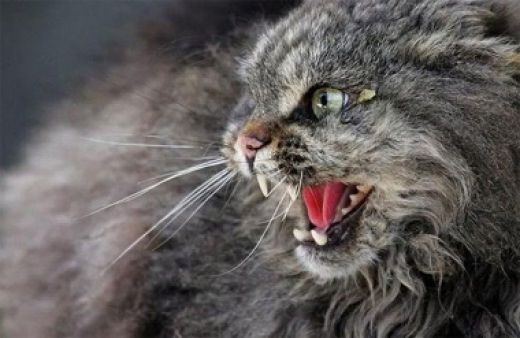Problems caused by wild cats running loose in New Hyde Park has gotten the backs up of a number of residents.
“It’s constant. It can’t get any worse than that you have to pick up after them in your backyard every day,” said Guy Ferrer, a Central Boulevard resident.
Ferrer, 77, a 35-year resident of the village, said he thinks the problem has been getting noticeably worse over the past year.
Another elderly Central Boulevard resident, Maureen Hyland, agrees with him.
“It’s getting to be ridiculous here,” she said. “I’m picking up dead birds. And they’re using my yard as a litter box.”
Hyland said she called New Hyde Park Village Hall and was advised to contact the American Society for the Prevention of Cruelty to Animals for assistance.
In a letter to the editor this week, Hyland suggested that people who apparently are feeding the cats should take them into their homes or “donate” the cats to the ASPCA.
The problem of feral cats isn’t a new one and isn’t restricted to New Hyde Park, according to Jane Tutura, a New Hyde Park resident who is a member of the Humane Urban Group, a non-profit organization that provides low cost spay, neuter, testing, and vaccine services with local veterinarians to stray cats for the Town of North Hempstead.
“There’s no doubt that the problem is out of control. It’s countywide and statewide,” Tutura said.
She said female cats can have two or three litters of kittens each year, with three or four kittens in each litter of predominantly female cats.
The root problem is abandoned cats who become feral to survive and teach kittens to avoid humans, Tutura said. That problem is exacerbated by people who feed the stray cats, she said, but cannot afford to spay and neuter them.
“You have people who just dump their cats once they’ve had enough of them. Then kind-hearted people see them walking round and feed them,” said Marianna Wohlgemuth, president of the Lakeville Estates Civic Association in New Hyde Park.
Wohlgemuth, who owns three cats, has taken a proactive steps to combat the problem in her neighborhood.
She recently trapped four kittens, which she paid to have spayed and get distemper shots, and is hoping to find homes for them.
Once cats are released into the wild, or born in the wild, they typically become part of a colony of 20 cats or more that subsist as scavengers. People who regularly feed stray cats assist in maintaining colonies of feral cats.
The Town of North Hempstead has funded various programs of trapping, neutering and releasing feral cats over the past several years.
“It’s an ongoing problem, dealing with feral cats. And if we don’t address it, it grows all out of proportion,” said Town of North Hempstead Supervisor Jon Kaiman. “Over the last two years, we’ve been doing a terrific job.”
Over the past year, Kaiman said the town has made significant progress in coping with the problem through a new program involving a veterinarian with a mobile clinic in a van. Dr. Diana Levitan, executive director of Helping PAW, a branch of Pioneers for Animal Welfare Society, has helped the town by “fixing” cats in that mobile clinic at low cost to residents who bring them in.
In the past year, the town has fielded 200 calls about feral cats, according to Kaiman, who said only 35 of those cases remain open.
The town has inter-municipal agreements in place with three or four villages for its trap, neuter and release program, which it is looking to extend to other municipalities. The town splits the cost of the program with the participating villages.
“We can do it at a pretty low cost,” Kaiman said.
Jack Hausman, president of the Humane Urban Group, praised the town for its efforts.
“They are really doing a good job,” he said. “The animals are getting shots. And they have caretakers who are taking care of them.”
Hausman disagrees with those who suggest euthanization as the most effective solution for colonies of feral cats. He cited the costs trapping large numbers of wild cats, as cats would simply continue to breed in the wild.
HUG members can borrow traps from the organization, which refers members to five veterinarians who provide low-cost spaying and neutering services.
“The animal population has to be reduced through attrition,” Hausman said.
A feral cat has a life expectancy of approximately five years. Hypothetically, that life expectancy would naturally control the wild cat population, presuming that increased numbers of the feral cats are rendered incapable of reproducing.
But that isn’t much comfort to homeowners trying to cope with the problem of wild cats who leave a trail of dead birds and feces in their wake.
The third phase of the town’s program entails releasing the cats in the area they were occupying before being trapped and neutered.
“They brought them back here, because they just can’t dump them anywhere. It’s not fair to anybody,” Wohlgemuth said.



